#dussack
Photo
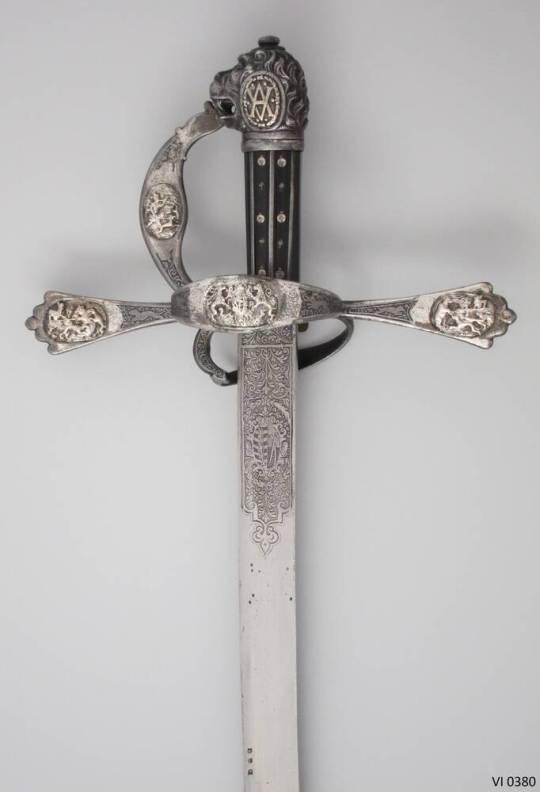
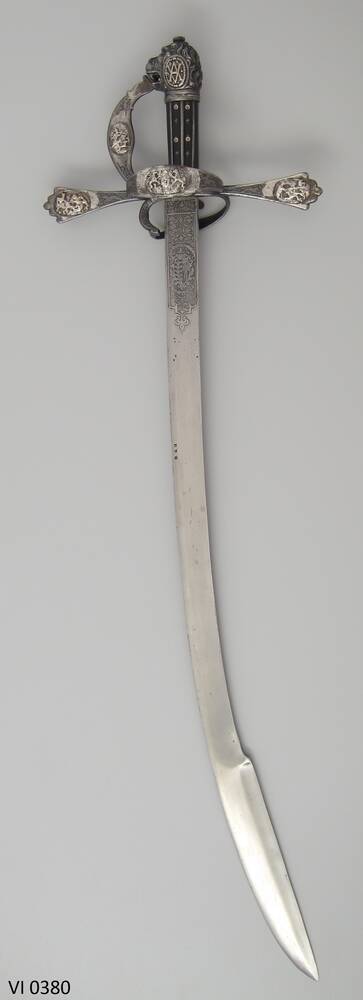
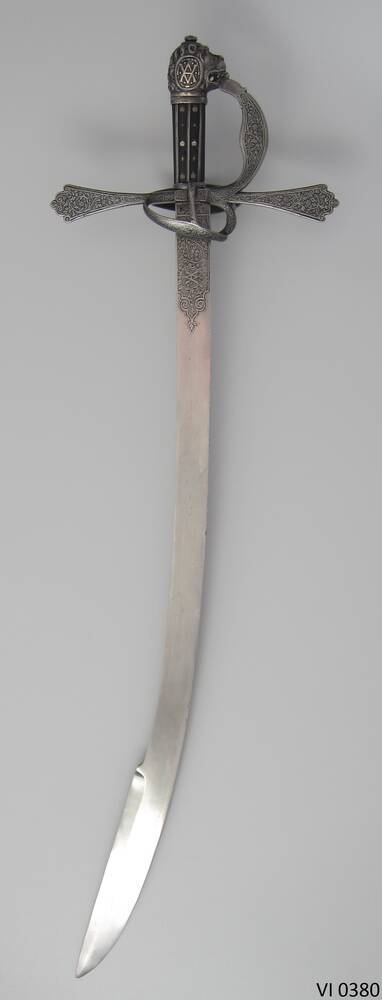
A beautifully wrought and etched Dussack commissioned by the Electress Anna of Saxony for her husband August, attributed to Ulrich Jahn,
OaL: 37.1 in/94.2 cm
Blade Length: 31.1 in/79 cm
Weight: 3.5 lbs/1604 g
Annaberg, Germany, ca. 1570-1580, housed at the Staatliche Kunstsaamlungen, Dresden.
#weapons#sword#dussack#sabre#saber#europe#european#germany#german#annaberg#hre#holy roman empire#renaissance#skd#art#history
1K notes
·
View notes
Text

Dussack with calendar for the year 1528. Germany.
172 notes
·
View notes
Text
"The Historical Fencing Channel is an organization that disparate historical fencing groups come together and, through agreement, to collectively validate and recognize the efforts of their individual members. In doing so a "common ground" and sense of community is created within, through which ideas, methods, and knowledge may be shared in order to promote the growth of both groups and their members beyond what would otherwise be separately achievable. This Channel is a common ground for members to submit videos of their interpretations, to create a library of techniques from differing groups"
More specifically we can see Adam Franti of the Lansing Longsword Guild in all the videos of this playlist - covering a lot of the basic strikes, guards and concepts of Meyer Dussack(effectively a form of medieval/renaissance central-european saber that usually had a (semi)complex hilt but was often practiced with leather and wooden practice weapons with simpler guards).
On that note here’s a masterpost of sorts of Meyer content on this blog
You may also remember Adam from the earlier methodology and murderhobos posts.
The provoker-taker-hitter tactical concept and its uses are quite relevant to dussack as a weapon.
You may also enjoy this general one-handed sword according to Meyer video as well
(and keep in mind the dussack is used by Meyer within his 1571 book as a basis for all one-handed weapons).
As well as these videos on how to apply the Meyer square to a dussack, and some other dussack-handling drills.
Lastly you might find the dussack tag of the blog relevant too.
For anyone who hasn’t yet seen the following links:
.
.
.
.
Some advice on how to start studying the sources generally can be found in these older posts
.
.
.
.
Remember to check out A Guide to Starting a Liberation Martial Arts Gym as it may help with your own club/gym/dojo/school culture and approach.Check out their curriculum too.
.
.
.
.
Fear is the Mind Killer: How to Build a Training Culture that Fosters Strength and Resilience by Kajetan Sadowski may be relevant as well.
.
.
.
.
“How We Learn to Move: A Revolution in the Way We Coach & Practice Sports Skills” by Rob Gray as well as this post that goes over the basics of his constraints lead, ecological approach.
.
.
.
.
Another useful book to check out is The Theory and Practice of Historical European Martial Arts (while about HEMA, a lot of it is applicable to other historical martial arts clubs dealing with research and recreation of old fighting systems).
.
.
.
.
Trauma informed coaching and why it matters
.
.
.
.
Look at the previous posts in relation to running and cardio to learn how that relates to historical fencing.
.
.
.
.
Why having a systematic approach to training can be beneficial
.
.
.
.
Why we may not want one attack 10 000 times, nor 10 000 attacks done once, but a third option.
.
.
.
.
How consent and opting in function and why it matters.
.
.
.
.
More on tactics in fencing
.
.
.
.
Types of fencers
.
.
.
.
Open vs closed skills
.
.
.
.
The three primary factors to safety within historical fencing
.
.
.
.
Worth checking out are this blogs tags on pedagogy and teaching for other related useful posts.
.
.
.
.
And if you train any weapon based form of historical fencing check out the ‘HEMA game archive’ where you can find a plethora of different drills, focused sparring and game options to use for effective, useful and fun training.
.
.
.
.
Check out the cool hemabookshelf facsimile project.
.
.
.
.
For more on how to use youtube content for learning historical fencing I suggest checking out these older posts on the concept of video study of sparring and tournament footage.
.
.
.
.
The provoker-taker-hitter tactical concept and its uses
.
.
.
.
.
Approaches to goals and methodology in historical fencing
.
.
.
.
.
A short article on why learning about other sports and activities can benefit folks in combat sports
.
.
.
.
.
Consider getting some patches of this sort or these cool rashguards to show support for good causes or a t-shirt like to send a good message while at training.
26 notes
·
View notes
Text
What swords does Cam use?
They are described as a pair of short, practical, plain looking, curved blade weapons.
As a swordfighting buff I've personally narrowed it down to three equally tantilizing options that are not "just machetes"
Kukri, a sort of long knife from Mongolia. I have zero historical context on who uses them and how they use them, this was the first weapon it sprung to my mind because of bloody One Piece. When I was eleven or something I saw on tv the anime episode with some guy double wielding kukri and that was my first exposure to them, so in my mind they can be double wield.
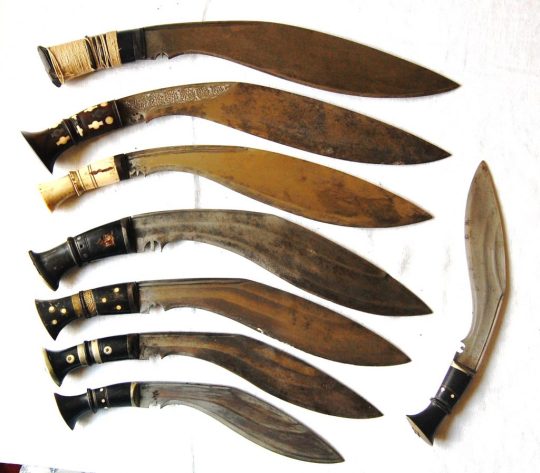

Look at this doofus I don't even like One Piece
Butterfly swords, used in wing chun and other chinese martial arts, always in pair. Not that I ever practiced any wing chun, to my understanting, watching katas, you can use both weapons at once to block and both weapons at once to strike, creating a flurry of perfectly coordinated slashes. For you to decide if this would count to be a "grease fire" style of fighting. Maybe, to the Nine Houses Cavaliers, used to a rapier-and-offhand system, in which you mantain control of your opponent's blade with one weapon and go for a opening with the other, Cam going loud would seem extremely daring.


Dussack, babyyyyy! The european short, single edged, curved bladed weapon in my heart. To my understanding it is also an umbrella term in german for any weapon with those characteristics, like a pirate's curiass, but I am talking about the late medieval-early reinassance. They came in two form factors:
Preppy swordies with complex hilts
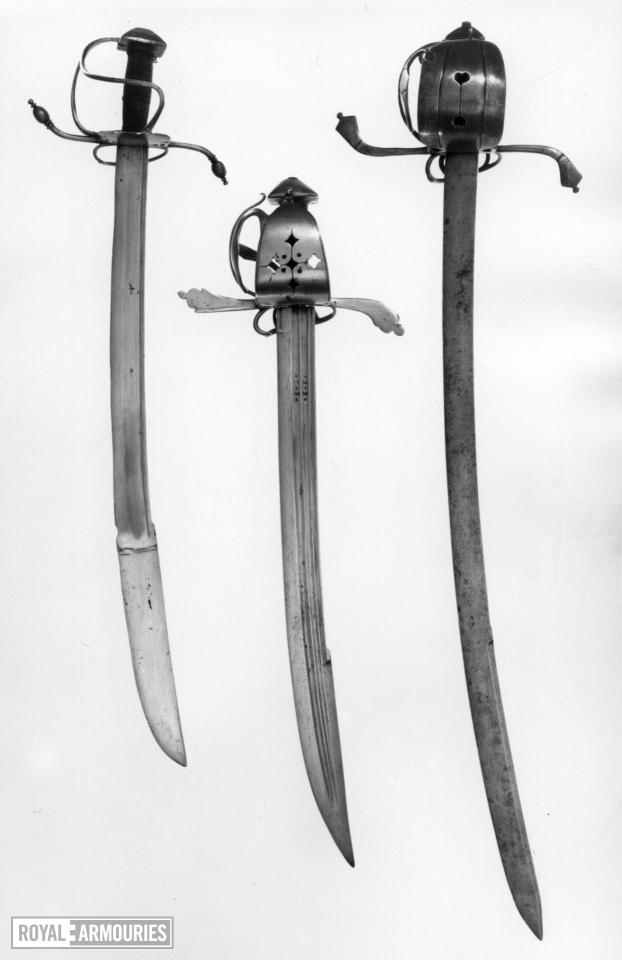
The lockjaw hazard
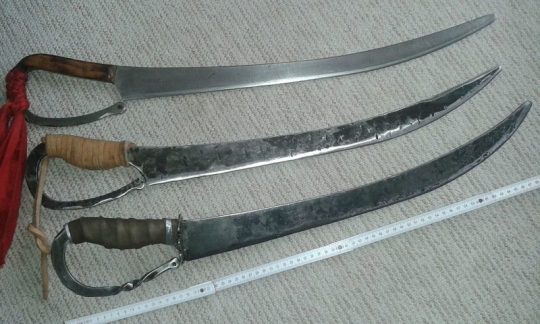
I can't decide which version I like more for Cam to wield. The complex hilted one are much more in line with the Houses rapier aesthetics, on the other hand the "just a single retorted steel piece with some taping as a handle" fits in with the scrappiness of the Sixth and the fierceness of the "gease fire".
In conclusion
I like the butterfly swords the most for the simple fact they are made to be twin blades and I respect a martial art tradition, most of the times they are rooted in solid fighting logic. Make sure to correct me if I have made any mistake or wrong assumption, I was just playing with my limited knowlege to find a nice headcanon
#tlt series#camilla hect#weapon#sword#headcanon#gideon the ninth#gideon the ninth spoilers#kukri#butterfly swords#dussack#the no frills dussack looks so much like the kill la kill half scissor
36 notes
·
View notes
Text
instagram
Here’s Tom with a quick review of the Dussack by Landsknect Emporium.
A Hard to Find Model… at Kult of Athena
#Kult of Athena#KultOfAthena#Landsknecht Emporium#Dorothea Dussack#Sword#swords#weapon#weapons#blade#blades#Dussack#European Swords#European Weapons#Medieval Swords#Medieval Weapons#Renaissance Swords#Renaissance Weapons#6150 High Carbon Steel#Battle Ready#HEMA#Historical European martial arts#16th century#Instagram#videos
1 note
·
View note
Text
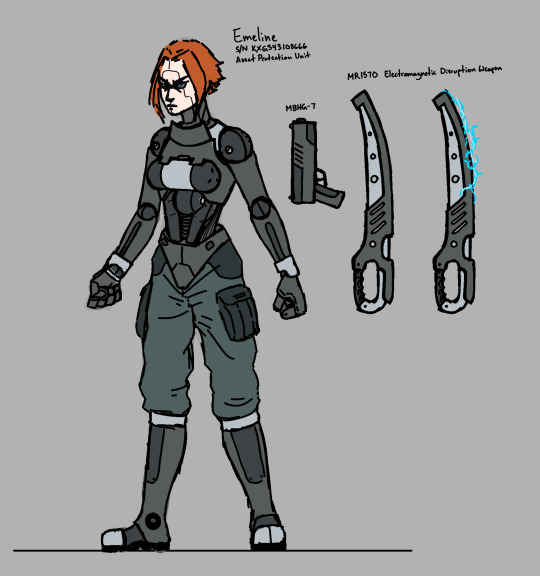
Watched a 6 and a half hour long Metal Gear lore video and it made me want to redesign an old OC of mine
19 notes
·
View notes
Text
A ranseur is fucking cool is what it is
#like I just had a first hand experience watching two people put on a demonstration fight with ranseurs#also one of the same people before that fight held another demonstration of a ranseur's range in fighting by having me and another 3 dussack#users go at him#he held us off just by swinging his fucking weapon#i want one#give me a ranseur#vitadacami#hema
0 notes
Text
What Your Favorite Sword Says About You (Slanderous)
Arming sword: you cannot fight without your emotional support buckler
Backsword: you’re the weirdo at the saber event
Basket-hilted broadsword: you’re an American with a kilt collection
Cutlass: you’re willing to spend $400 to lose at saber
Dagger: you like to grapple but can’t close distance without getting cleaved
Dussack: you don’t understand why no one wants to play with a 400-year-old boffer
Katana: there is a 90% chance you have no idea what you’re doing
Kriegsmesser: you’re willing to spend $800 to lose at longsword
Longsword (German): wall of text about why your feder is a real sword
Longsword (Italian): you get scared and confused whenever your opponent switches to thumb grip
Messer: wall of text about why your messer *isn’t* a real sword
Montante: you have no friends
Rapier: you’re scared to get hit with a sidesword
Saber (dueling): you’re a sport fencer who wanted a flashier outfit
Saber (military): you will burst into flames if you lose to one more dueling saberist
Sidesword: you’re not dexterous enough for rapier
Shashka: you like wearing furry hats better than having fingers
Smallsword: you can’t lift a rapier
Spadroon: you’re outnumbered by people who have never heard of your weapon at your own event
Viking sword: there’s a 100% chance you have no idea what you’re doing
116 notes
·
View notes
Text
youtube
Marek Tadeusz Helman is HEMA instructor and professional bladesmith based on Oborniki , Poland....and I frigging love his work. He has been practicing and studying HEMA for over 20 years now , a hardcore Meyerist and renown bladesmith from Kolo, Poland . He coined the motto: "For Hemaist from Hemaist"and with good reason, he produces a variety of swords, feders, full blades, sharps, costum work, rapiers, sideswords, sabres , montante, dagger ,messer,dussacks....you name it.
I have been a long time after one of his feders. And finally my chance came to become the happy owner of one of his feders. This time I present you his Basic or Entry-level feder. I m pretty sure I m the first lucky bastard to put his hands on his work from Puerto Rico and here in Springfield MO. But I m going to make sure his work becomes known and that it gets it's due praise. I have own or played/spar with almost every known brand of feder/longsword on the market right now for HEMA. And I can tell you guys Helman s work surpasses every expectation from two decades practicing/studying HEMA.
These are the number one feders I will from now on recommend to my students in 417 HEMA and colleagues from Esgrima Antigua e Hístorica Puerto Rico. They are well balanced, nice flex , length and weight and awesome and they are sturdy for every aspect of our practice....solo practice, pair practice, technique, spar and competition scene. I love that the blade s profile , they are replaceable and the detail on the hilt feels just right.
So, a big shout out to our friend Marek in Poland!
---------------------------------------------------
From HEMA Supplies websire: Blade Type: Flat feder type profile, replaceable Blade Length: 97 – 100 cm (see drop-down menu for in-stock options) Schilt: Flared (Length – 7 cm) Tip: Flared (approximately 1 cm width at tip) Crossbar: 26 – 27 cm squared. Grip Type: Waisted Grip Length (including pommel): 32.5 cm Grip Covering: Cord – see drop-down menu for current color options! Pommel: Spinning Top (Length – 4 cm) Weight: Approximately 1190 – 1260 grams Point of balance: Approximately 10 – 12 cm from cross
#longsword#hema springfield mo#springfield MO#Esgrima Antigua e Historica Puerto Rico#Historical European Martial Arts#Youtube
3 notes
·
View notes
Text
Watch "Dussack: Ye Olde Boffer" on YouTube
2 notes
·
View notes
Note
And of course, then we have to talk about the dussack! The messer was so successful, by the 1400's, they attached a more complex basket hilt on it and BAM: dussack, baby! Still not a sword, because it doesn't have a full tang!

"Ah, yes, The Dussack, the slightly fancier, tricked out version of the Messer that still isn't a 'Weapon' and still is useful as all hell for a number of reasons and uses-"

"I prefer the Messer still for its simplicity, but the Dussack is damn close - all the fanciness and improved hilt protection you could want, but its Still just a damn knife, not a weapon!"
#ic#radnewworld#Hriob is STILL nerding out and is so glad so many people are sharing their swords for show and tell-#ic dash commentary#Hriobby Hobby Corner#hriob answers asks
2 notes
·
View notes
Text
Making a wooden dusack
i am cutting out template/stencil to trace on the wood to cut out the shape of dusack.
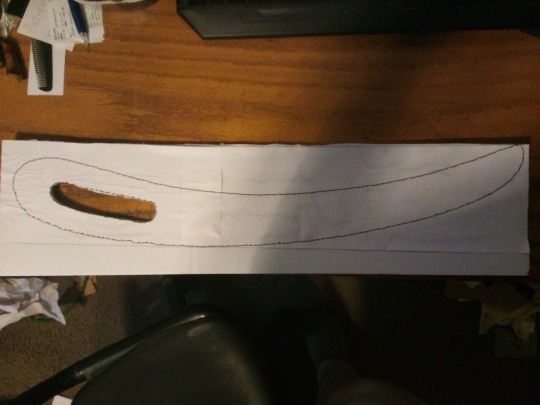
and yes i am making a a training tool/training weapon out of wood.
i get this from instructables.
and i almost forgot here are the paper cut out to prints to help anyone who might want to try to make one for themself.
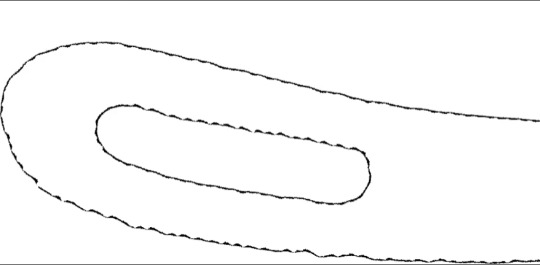

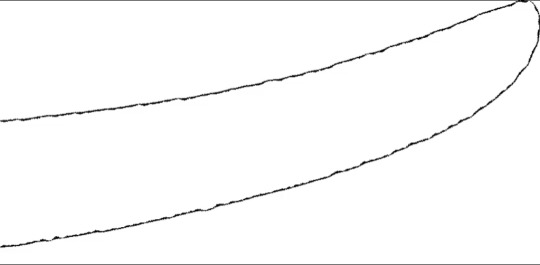
#hema#sword#woodworking#Historical European martial arts#dusack#martial arts#European martial arts#instructables#diy#diy projects
0 notes
Text
For anyone who hasn’t yet seen the following links:
.
.
.
.
Some advice on how to start studying the sources generally can be found in these older posts
.
.
.
.
Remember to check out A Guide to Starting a Liberation Martial Arts Gym as it may help with your own club/gym/dojo/school culture and approach.Check out their curriculum too.
.
.
.
.
Fear is the Mind Killer: How to Build a Training Culture that Fosters Strength and Resilience by Kajetan Sadowski may be relevant as well.
.
.
.
.
“How We Learn to Move: A Revolution in the Way We Coach & Practice Sports Skills” by Rob Gray as well as this post that goes over the basics of his constraints lead, ecological approach.
.
.
.
.
Another useful book to check out is The Theory and Practice of Historical European Martial Arts (while about HEMA, a lot of it is applicable to other historical martial arts clubs dealing with research and recreation of old fighting systems).
.
.
.
.
Trauma informed coaching and why it matters
.
.
.
.
Look at the previous posts in relation to running and cardio to learn how that relates to historical fencing.
.
.
.
.
Why having a systematic approach to training can be beneficial
.
.
.
.
Why we may not want one attack 10 000 times, nor 10 000 attacks done once, but a third option.
.
.
.
.
How consent and opting in function and why it matters.
.
.
.
.
More on tactics in fencing
.
.
.
.
Types of fencers
.
.
.
.
Open vs closed skills
.
.
.
.
The three primary factors to safety within historical fencing
.
.
.
.
Worth checking out are this blogs tags on pedagogy and teaching for other related useful posts.
.
.
.
.
And if you train any weapon based form of historical fencing check out the ‘HEMA game archive’ where you can find a plethora of different drills, focused sparring and game options to use for effective, useful and fun training.
.
.
.
.
Check out the cool hemabookshelf facsimile project.
.
.
.
.
For more on how to use youtube content for learning historical fencing I suggest checking out these older posts on the concept of video study of sparring and tournament footage.
.
.
.
.
The provoker-taker-hitter tactical concept and its uses
.
.
.
.
.
Approaches to goals and methodology in historical fencing
.
.
.
.
.
A short article on why learning about other sports and activities can benefit folks in combat sports
.
.
.
.
.
Consider getting some patches of this sort or these cool rashguards to show support for good causes or a t-shirt like to send a good message while at training.
16 notes
·
View notes
Text
Writers, artists, if you ever wondered what people used as training swords in previous centuries...here's one version for ya!
0 notes
Text
instagram
The Dussack is a sidearm originating in the early 16 th century, and it was first mentioned in the manuscript ‘Ergrundung Ritterlicher Kunst der Fechterey’ written by a fencing master Andre Paurñfeyndt in 1516. It has soon become a standard part of fencing treatments, where they are usually shown as made out of wood (for practicing purposes).
The actual weapon is defined by a now often curved blade, a knucklebow and protection for the back of the hand. The dusack’s blade length usually lies between 635mm and 884mm. When it comes to the blades and hilts, the originals and period depictions show a considerable variation. Per Terje Norheim created a typology for them in 1971 which was translated by Keith Cotter-Reilly in 2020, who inspired us to do this project. From all the available variations, we choose a type G hilt with a type III blade – the latter is approximately equivalent to the Elmslie type 4a++ blade.
The blade and pommel are all fully ground by hand, the cross and the shell are hand- forged in Landsknecht’s Emporium. The peculiar finials and pommel shape are based quite closely on antique Dussacks and are representing stylized sea monsters. According to Major Eivind Eyvang’s publication on the subject (also translated by Keith Cotter-Reilly), dussacks hilted with type G hilts are the lightest variation, with the originals weighing between 920g and 1150g. Our interpretation aims at a weight of 1050-1070 grams which yields a fast, nimble weapon while still having a sturdy enough blade to survive sparring.
Landsknecht Emporium products aim to have the aesthetics of historical pieces, not the finish of mass-produced items. Each product bears the signs of its making; of small tool marks and various handcrafted imperfections, which do not affect the build quality or usability but give each of our pieces its unique character.
#Kult of Athena#KultOfAthena#Landsknecht Emporium#Dorothea Dussack#Sword#swords#weapon#weapons#blade#blades#Dussack#European Swords#European Weapons#Medieval Swords#Medieval Weapons#Renaissance Swords#Renaissance Weapons#6150 High Carbon Steel#Battle Ready#HEMA#Historical European martial arts#16th century#instagram#videos#Instagram
0 notes
Note
Trick or treat!
Italian Schiavona by Darkwood Armory
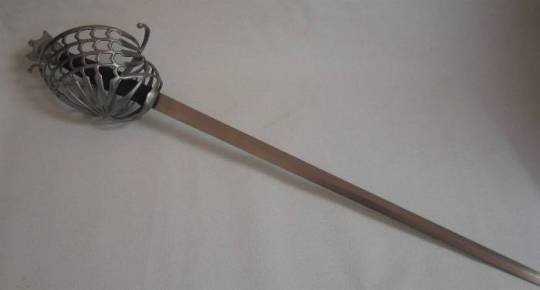
Schiavonas are interesting swords. They're basket-hilted and straight-bladed like backswords, but the hilt design also allows for wrapping the index finger around the ricasso in a manner similar to sideswords and rapiers. There's room for a lot of interesting ways in which you can use a sword like this. Use it like a sidesword. Use it like a backsword. Use it like a dussack. Seems like fun!
13 notes
·
View notes